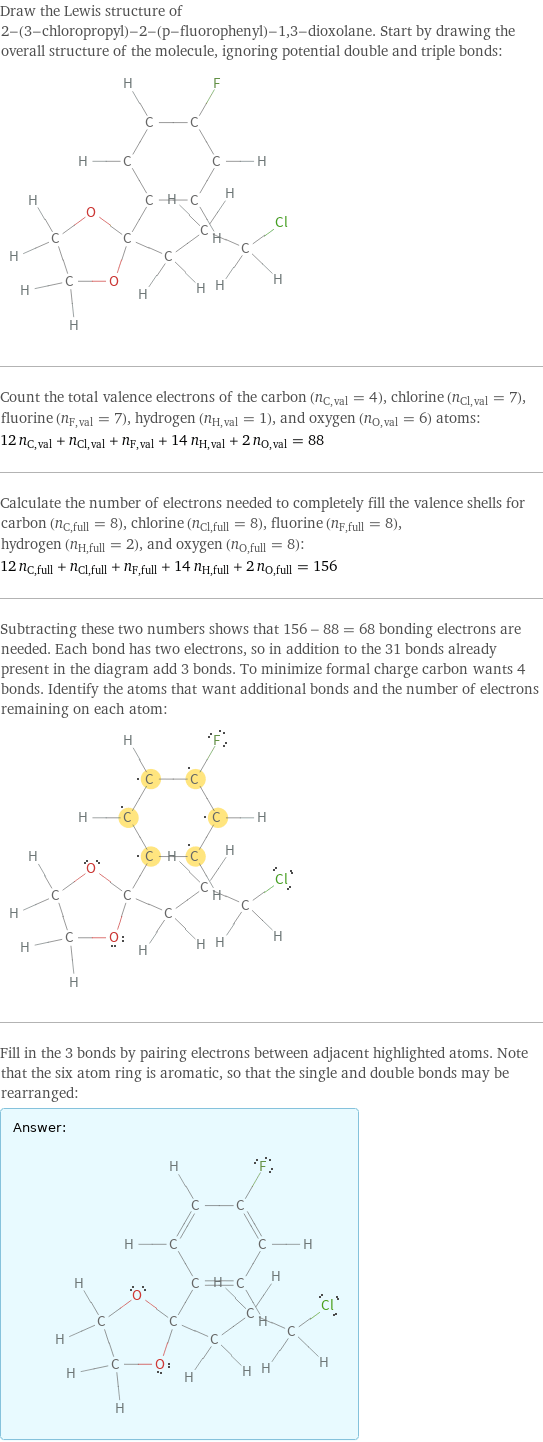Input interpretation

2-(3-chloropropyl)-2-(p-fluorophenyl)-1, 3-dioxolane | structure diagram
Result

Draw the Lewis structure of 2-(3-chloropropyl)-2-(p-fluorophenyl)-1, 3-dioxolane. Start by drawing the overall structure of the molecule, ignoring potential double and triple bonds: Count the total valence electrons of the carbon (n_C, val = 4), chlorine (n_Cl, val = 7), fluorine (n_F, val = 7), hydrogen (n_H, val = 1), and oxygen (n_O, val = 6) atoms: 12 n_C, val + n_Cl, val + n_F, val + 14 n_H, val + 2 n_O, val = 88 Calculate the number of electrons needed to completely fill the valence shells for carbon (n_C, full = 8), chlorine (n_Cl, full = 8), fluorine (n_F, full = 8), hydrogen (n_H, full = 2), and oxygen (n_O, full = 8): 12 n_C, full + n_Cl, full + n_F, full + 14 n_H, full + 2 n_O, full = 156 Subtracting these two numbers shows that 156 - 88 = 68 bonding electrons are needed. Each bond has two electrons, so in addition to the 31 bonds already present in the diagram add 3 bonds. To minimize formal charge carbon wants 4 bonds. Identify the atoms that want additional bonds and the number of electrons remaining on each atom: Fill in the 3 bonds by pairing electrons between adjacent highlighted atoms. Note that the six atom ring is aromatic, so that the single and double bonds may be rearranged: Answer: | |